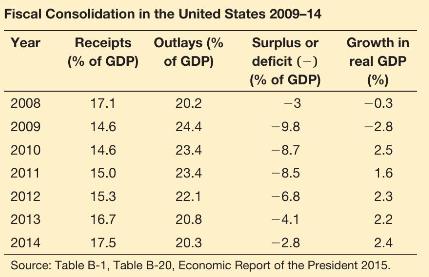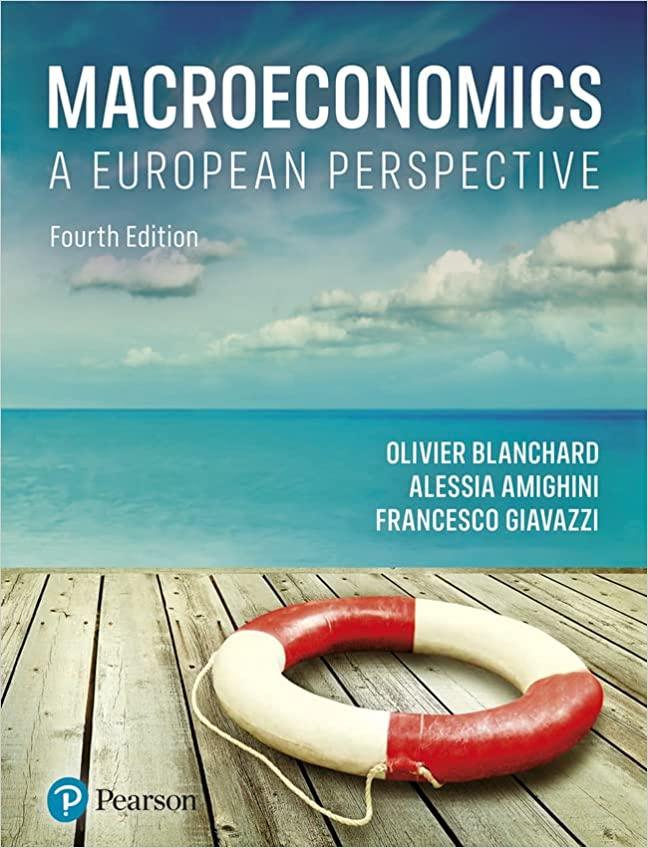Deficits and fiscal consolidation As seen in the following table, the 2008 financial crisis left the United
Question:
Deficits and fiscal consolidation As seen in the following table, the 2008 financial crisis left the United States with an enormous federal budget deficit in 2009.
There was a substantial fiscal consolidation from 2011 onward, yet real output continued to grow.
Fiscal Consolidation in the United States 2009-14

Source: Table B-1, Table B-20, Economic Report of the President 2015.
a. Which played a larger role in the fiscal consolidation: raising taxes or reducing outlays?
b. In terms of the language of the text, if this fiscal consolidation were anticipated as of 2009 , was it 'backloaded'? How might this help minimise the effects of the fiscal consolidation on output growth?
c. We know from Question 2 and from Chapters 4 and 6 that monetary policy maintained the nominal policy rate of interest of close to \(0 \%\) throughout this period and promised to maintain low interest rates into the future. Why did it do so?
d. The Federal Reserve introduced a target rate of inflation during the consolidation period on 25 January 2012. What is one advantage of introducing a policy where inflation is targeted at \(2 \%\) during a period of zero interest rates and fiscal consolidation?
e. We used the University of Michigan's Index of Consumer Sentiment in the previous chapter as a measure of expectations of households about the future. You can look at the values of this index at the FRED database maintained by the Federal Reserve Bank of St Louis (series UMCSENT). Find this index and comment on its evolution from 2010 to 2014 as the fiscal consolidation proceeded.
Step by Step Answer:

Macroeconomics A European Perspective
ISBN: 9781292360898
4th Edition
Authors: Olivier Blanchard, Alessia Amighini, Francesco Giavazzi





